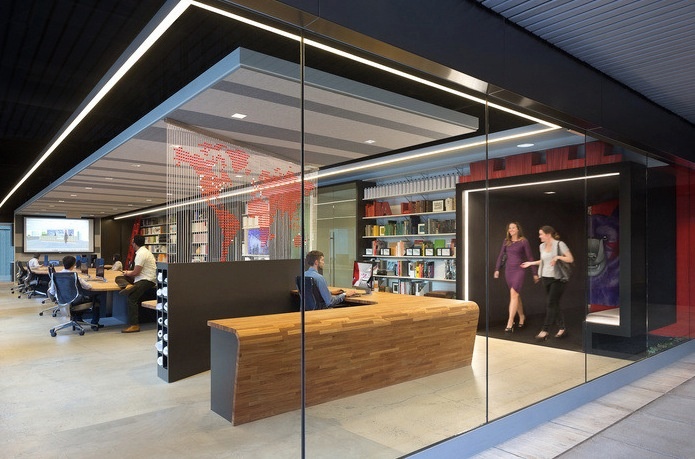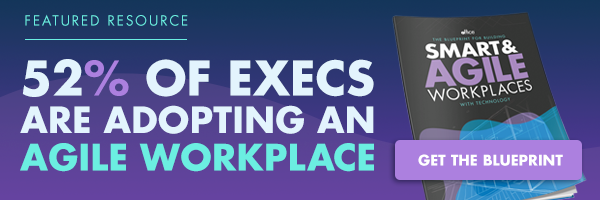Our Favorite Examples of Activity-Based Workplace Design


We know we shouldn’t play favorites. But sometimes an organization really knocks it out of the park, and we can’t help but give them a shoutout.
As more organizations implement activity-based working(ABW) to maximize space utilization and enhance the employee experience, they’ve updated their activity based office environment to enable greater flexibility through a better workplace design.
And we’ve been taking note.
Here are a few of our favorite examples of activity-based workplace design.
4 Inspiring Examples of an Activity Based Office & Workplace Design
Company: Unispace
Location: Los Angeles, California

Office Size: 2,700 sq. ft.
Unispace’s Activity Based Office Story
Unispace’s office does double duty: it promotes cross-departmental collaboration while simultaneous
ly acting as an exhibition of the interior design firm’s prowess. Every one of Unispace’s projects requires open communication between the designers, project managers and construction professionals. So when the team moved into a new office space in 2014, they ditched assigned workstations and partitions and adopted a design that encouraged flexibility and open communication between each team. Unispace’s activity-based workplace design mirrors their personalized approach to projects by allowing employees to choose the workspace that is best suited to complete each individual assignment.

(Source)
Company: Oktra
Location: London, England
Office Size: 9,300 sq. ft.
Oktra’s Workplace Design Story
Like Unispace, Oktra is a workplace design firm that recently decided to reorganize their current office space. Recognizing their workforce had a mix of introverts and extroverts, Design Director Nic Pryke knew he and his team would have to balance the open-office concept with the need for ample quiet areas. Pryke’s goal was to build an agile workplace that reflected the company’s workforce and to make better use of the available space. Pryke and his team succeeded in this endeavor, managing to eliminate 30 percent of the desks and creating spaces for collaborating and sharing insights, a designated desk area and phone booths where employees can take personal calls.
(Source)
Company: Gerson Lehrman Group (GLG)

Location: New York City, New York
Office Size: 64,000 sq. ft.
GLG’s Workplace Design Story
Completed in 2014, GLG’s downtown NYC office represents the largest implementation of activity-based workplace design by a U.S. company. The consulting firm’s previous office design was not well-suited for client meetings, according to GLG’s head of public affairs. And because GLG prides itself on facilitating knowledge transfer between their clients, they decided it was time to make a change. With the stale, outdated office design a thing of the past, GLG employees can now work together at the coffee bar (manned by a full-time barista), duck into a glass-walled meeting cube or temporarily set up shop in a more traditional desk setting–whichever space is best for them.
(Source)
Company: Microsoft
Location: Amsterdam, Netherlands
Office Size: 117,200 sq. ft.
Microsoft’s Activity Based Office Design Story
In 2010, Microsoft tasked architect Sevil Peach and activity-based working experts Veldhoen + Company with creating an office space that embodied transparency and flexibility. Sevil Peach and Veldhoen + Company had their work cut out for them as they collaborated to create a space where 1,000 employees could feel a sense of belonging in an office where they didn’t have a dedicated desk. Microsoft’s Amsterdam office certainly offers the greatest variety of spaces of any company on this list, boasting individual work carousels, private and semi-enclosed meeting rooms, two auditoriums, a coffee shop, indoor and outdoor dining areas, relaxation zones, sleep pods, concentration booths and lounges. There are dedicated spaces for virtually every activity.
(Source)
We hope you’re feeling inspired! If you’ve been moving toward an activity based office working model and encountered some resistance, updating your workplace design may be the best way to get employees excited about the endeavor.
Implementing a unique activity-based workplace design is just one part of adopting this new way of working. To make activity-based working actually work, your organization also needs to have the right technology to empower employees to be productive even when they aren’t at their desks.
Want to learn more about how companies like Sodexo, Genentech and Hershey updated their workplace strategy to meet the needs of a changing workforce? Check out our latest eBook, Building the Workplace of the Future.
